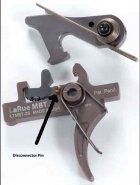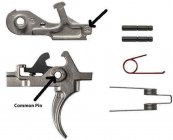My trigger is two stage and lowest advertised is 8OZ on the 2nd stage. Please let me know if my process is at fault, because I keep getting 1lb+ consistently on the 2nd stage.
I set my trigger gauge, pull the first stage to the wall and keep pulling until it breaks at 1lb+ I tried this multiple times with electronic and mechanical gauge, same result.
I take slack off the first stage with a pencil, the trigger gauge is only pulling on the 2nd stage (in other words the 1st stage was not pulled by the trigger gauge). Again, same 1lb+ pull weight.
Is there anything wrong in my process? I pull my gauges consistently and put it directly on the center of the trigger. I have adjusted the screw as far as I can.
TIA
I set my trigger gauge, pull the first stage to the wall and keep pulling until it breaks at 1lb+ I tried this multiple times with electronic and mechanical gauge, same result.
I take slack off the first stage with a pencil, the trigger gauge is only pulling on the 2nd stage (in other words the 1st stage was not pulled by the trigger gauge). Again, same 1lb+ pull weight.
Is there anything wrong in my process? I pull my gauges consistently and put it directly on the center of the trigger. I have adjusted the screw as far as I can.
TIA












